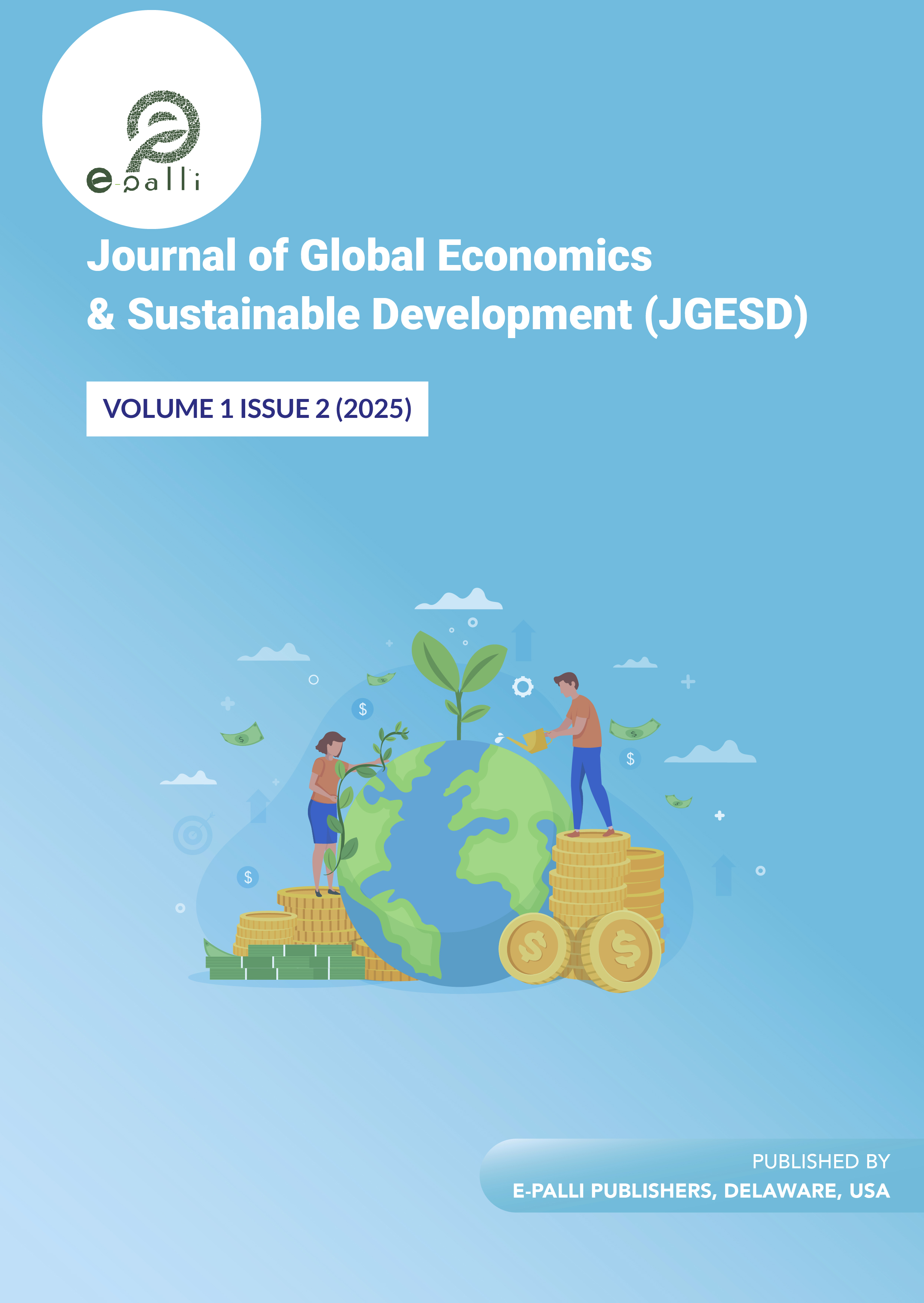Currency Choice under the Shadow of Dollar Hegemony: A Comparative Analysis of BRICS Bridge and the Euro in International Political Economy
Keywords:
Brics Bridge, De-Dollarization, Euro, Institutional Competition, Monetary HegemonyAbstract
This study examines the strategic and institutional dimensions of currency choice under U.S. dollar hegemony. It contrasts the Euro’s stable but dollar-bound system with BRICS Bridge’s decentralized, de-dollarized clearing approach. While the Euro offers institutional coherence, it remains structurally tied to the dollar-based system. BRICS Bridge promotes sovereign inclusivity but faces challenges in consolidation due to member asymmetries. The analysis shows that global currency competition is increasingly shaped by power, sovereignty, and governance struggles. The paper calls for enhanced multilateral coordination and cross-system clearing solutions.
References
Abdelaziz Abdeldayem, F. M., & Wadie Kswat, S. F. (2025). BRICS expansion in the news coverage of member countries: A political economy perspective. Journal of Humanities and Applied Social Sciences, 7(1), 18–37.
Aggarwal, P. (2020). On de-risking and de-dollarizing intra-BRICS trade via smart contracts. BRICS Journal of Economics, 1(4), 54–69.
Belke, A., & Styczynska, B. (2006). The allocation of power in the enlarged ECB Governing Council: An assessment of the ECB rotation model. JCMS: Journal of Common Market Studies, 44(5), 865–897.
Bond, P. (2018). East–west/north–south–or imperial–subimperial? The BRICS, global governance and capital accumulation. Human Geography, 11(2), 1–18.
Cohen, B. J. (2015). Currency power: Understanding monetary rivalry. Princeton University Press.
Costigan, T., Cottle, D., & Keys, A. (2017). The US dollar as the global reserve currency: Implications for US hegemony. World Review of Political Economy, 8(1), 104–122.
De Goede, M. (2012). The SWIFT affair and the global politics of European security. JCMS: Journal of Common Market Studies, 50(2), 214–230.
De Grauwe, P., Ji, Y., & Steinbach, A. (2017). The EU debt crisis: Testing and revisiting conventional legal doctrine. International Review of Law and Economics, 51, 29–37.
Fratzscher, M. (2009). What explains global exchange rate movements during the financial crisis? Journal of International Money and Finance, 28(8), 1390–1407.
Gadanecz, B., & Jayaram, K. (2008). Measures of financial stability—A review. Irving Fisher Committee Bulletin, 31(1), 365–383.
Gowa, J. (1989). Rational hegemons, excludable goods, and small groups: An epitaph for hegemonic stability theory? World Politics, 41(3), 307–324.
Hellendoorn, E. (2025). Finance, strategy and European autonomy. Survival, 67(1), 99–122.
Hristov, N., Hülsewig, O., & Wollmershäuser, T. (2018). TARGET2: Understanding the glue that keeps the euro together. In Highs and lows of European integration: Sixty years after the Treaty of Rome (pp. 201–211). Springer International Publishing.
Kaikati, J. G. (1999). The euro versus the US dollar: An overview. Journal of World Business, 34(2), 171–192.
Kim, T. H. J., & Lampkins, J. (2018, December). BRICS: Blockchain-based resilient information control system. In 2018 IEEE International Conference on Big Data (Big Data) (pp. 5363–5365). IEEE.
Lee, B. T. F., & Sims, J. P. (2024). The BRICS+ expansion, global trade dynamics, and the dedollarization phenomenon. Unnes Political Science Journal, 8(1), 19–29.
Meissner, K. (2025). EU trade policy in a geopolitical age. In The European Union’s geopolitics: The lackluster world power (pp. 99–117). Springer Nature Switzerland.
Muñoz, D. R., Lamandini, M., & Argachal, C. B. (2023). ECB accountability under the SSM: New dimensions of political and administrative accountability with particular focus on climate risks. Maastricht Journal of European and Comparative Law, 30(4), 414–437.
Ng, J. (2024). The BRICS plus challenge and emerging hierarchical multilateralism. Global Governance: A Review of Multilateralism and International Organizations, 30(2), 270–287.
Peruffo, L., Cunha, A. M., & Haines, A. E. F. (2025). Moving away from a dollar dominated international monetary and financial system? The BRICS grouping as an arena to promote the e-CNY. In The Palgrave Handbook on China-Europe-Africa Relations (pp. 1149–1165). Springer Nature Singapore.
Putri, F. M., & Santoso, M. P. T. (2023). BRICS diplomacy: Building bridges for global cooperation. Politics and Humanism, 2(1), 10–21.
Saaida, M. (2024). BRICS Plus: De-dollarization and global power shifts in new economic landscape. BRICS Journal of Economics, 5(1), 13–33.
Solti, A. (2024). The Bretton Woods system as the cornerstone of the United States’ hegemony. Financial and Economic Review, 23(2), 186–204.
van Wageningen, A. (2016). The changing role of CSDs in the post-trade industry in Europe: Impact of the CSD-regulation and T2S. In Analyzing the economics of financial market infrastructures (pp. 317–333). IGI Global Scientific Publishing.
Vom Hau, M., Scott, J., & Hulme, D. (2012). Beyond the BRICs: Alternative strategies of influence in the global politics of development. The European Journal of Development Research, 24, 187–204.
Webb, M. C., & Krasner, S. D. (1989). Hegemonic stability theory: An empirical assessment. Review of International Studies, 15(2), 183–198.
Downloads
Published
How to Cite
Issue
Section
License
Copyright (c) 2025 Jia-Ying Lyu

This work is licensed under a Creative Commons Attribution 4.0 International License.



